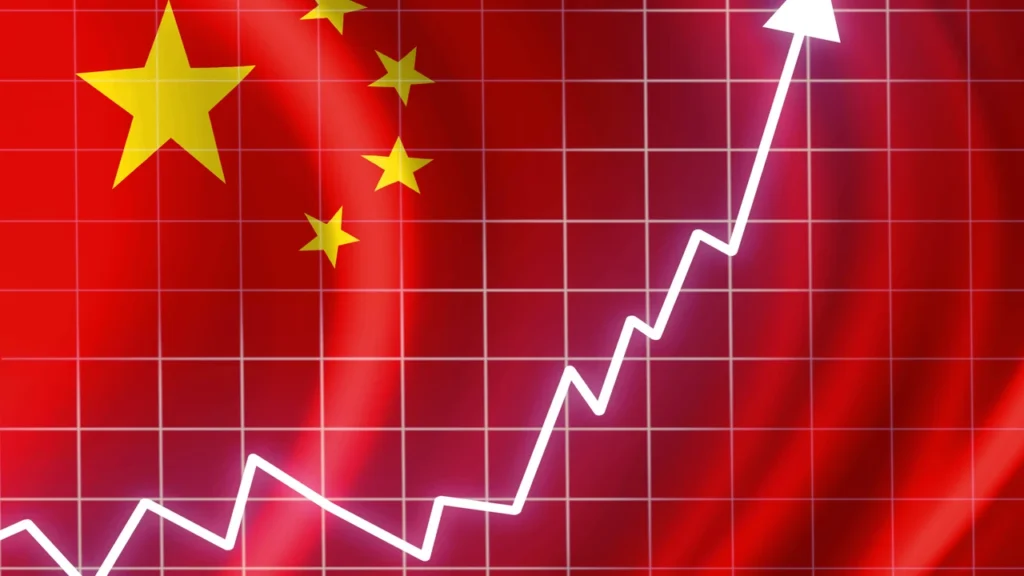In late 2024, China’s 30-year bond yield fell below Japan’s 30-year bond yield for the first time. Due to China’s slower-than-expected economic growth and the steps taken by the People’s Bank of China to revive the economy, 30-year bond yields have dropped below 2%. The Western media did not hesitate to exaggerate and distort this development. They likened this process to Japan’s deflation and stagnation period, calling it “Japanification.” In Turkiye, the neoliberal commentators were even quicker in overstating the situation. Prof. Dr. Özgür Demirtaş, who claimed Russia would collapse within three months following its operation, has asserted that the Chinese economy is “shattered.” But is the Chinese economy truly in trouble? Let’s examine the reasons often cited by neoliberals abroad one by one.
Neoliberals’ criticism of China’s 5% growth by pointing to short-term movements in its bond yields is laughable. The United States and G7 countries, which they admire, struggled to grow by barely 1% in 2024, while China grew by 5% during a year when the world was heading toward recession (according to IMF estimates). In other words, while China grew at least five times more than the G7, neoliberals sneer at this growth! Looking at the growth trends in the table below for the past decade, we can see that the Chinese economy has maintained a steady pace of growth. To talk about stagnation similar to Japan’s, there would need to be several consecutive years of growth below 2%. The table demonstrates the strength of China’s growth and its superiority over the Western bloc, referred to as the U.S. and G7IMF, and the Middle-Income Trap.
Neoliberal economists claim that China has fallen into the “middle-income trap” by pointing to its slower growth rates in recent years compared to previous decades. The middle-income trap refers to a situation where an economy becomes stuck at that level after reaching a certain per capita income and cannot progress further. This concept implies a slowdown in an economy’s efforts to transition into a high-income country, resulting in shorter periods of growth. Economies caught in this trap often face challenges such as low savings rates, insufficient investments, slow progress in industrialization, and weak labor market conditions. As wages rise, competitive advantages are lost.
However, this has not been the case for China. While wages have continued to increase, China has risen to a leading position in high-value-added, high-tech industries, including sectors like electric vehicles and renewable energy. One of the fundamental characteristics of the Chinese economy is its reliance on centralized planning. Planning identifies priority sectors, and massive infrastructure investments are made to ensure continuous production. At first glance, these investments may seem like inefficient resource allocations that burden the budget or require borrowing. Neoliberals label such investments as “inefficient, burdensome to the public, and inflationary.” However, depending on the field and investment tools, they yield results years or decades later.
When China started its high-speed rail investments with significant borrowing, the Western media mocked the endeavor. Today, China is the country with the fastest-moving workforce in the world, thanks to its high-speed rail network. The savings and added value generated are immense. Meanwhile, the Chinese Railways company, which was predicted to fail, is now highly profitable and is rapidly repaying its debts.
Another claim from neoliberals is China’s so-called “overcapacity.” Every mainstream economist commenting on the Chinese economy repeats the mantra: “China is overproducing and subsidizing in a way that disrupts competition.” These critics conveniently ignore the subsidies, incentives, and grants provided in Western countries. For example, the American company Apple produces far more smartphones than the U.S. market needs—what neoliberals would call overcapacity—and exports them globally. Or consider the American petroleum industry, which has reached record levels of shale gas production in recent years, saturating the domestic market and exporting abroad. The U.S.’s high production levels have played a significant role in lowering oil prices. The petroleum and technology sectors are among the most subsidized in the U.S., yet neoliberals tend to downplay or ignore the impact of such support in the West.
China’s Venture Capital Ecosystem Surpasses the West
China’s venture capital ecosystem has already surpassed the West. One reason for China’s significant breakthroughs in new technologies is the government’s unwavering support for the best private enterprises, regardless of political ties. Neoliberal critics who accuse China of overproduction overlook the country’s contributions to lowering solar energy costs by increasing production and fostering innovation. Thanks to China’s efforts in solar energy production and technology, the cost of electricity generated from solar energy has decreased by 89%.
Three key factors underpin China’s status as the trade partner of 120 countries: its abundance of rare earth metals, its expertise in green technology, and its vast industrial production capacity. Therefore, contrary to neoliberal claims, isolating China is not feasible. China is the only country in the world that produces at least one component of nearly every intermediate good. While the U.S. aims to reduce its dependence on China by sourcing intermediate goods from India, Mexico, and Vietnam, these countries often import the necessary parts from China, rebrand them, and export them to the U.S. In the end, despite all U.S. efforts, China is not losing market share; it is increasing its global market presence. Thus, neoliberal expectations of sidelining China, akin to isolating the Soviet Union or Eastern Bloc countries, remain unfounded.
Will the U.S.’s Strategy Against China Succeed?
Comments from Jim Farley, CEO of American automotive giant Ford, following his visit to China, were telling. Farley admitted that China produces much cheaper and higher-quality products than Western automotive brands, posing a clear threat to Western companies. Ford incurred a $5 billion loss in 2024 on its investments in electric vehicles. The company is trying to sustain its production by securing patents from China and partnering with Chinese firms. Similar challenges apply to Apple and other major American corporations. Apple’s dependency on Chinese intermediate goods grows yearly, illustrating why Trump’s containment strategy against China is unlikely to succeed.
This situation also refutes the neoliberal claim that China will remain confined to its sphere and that the U.S. will eliminate its reliance on China. Even if the U.S. manages to reduce its dependence on China, China’s domestic market is large enough to offset the loss of the U.S. market. Ultimately, claims that the Chinese economy will “shatter,” fail to overcome its challenges, or become “another Japan” are baseless. The reason neoliberals and Western mainstream media target China with propaganda is that, for the first time in history, China and the BRICS countries it leads have surpassed the G7. While the future looks bleak for the G7, it is bright for BRICS and other emerging economies, including Turkiye.
This article is retrieved from the Aydinlik Newspaper
Source: https://www.aydinlik.com.tr/koseyazisi/cin-ekonomisi-hakkinda-sehir-efsaneleri-502890





